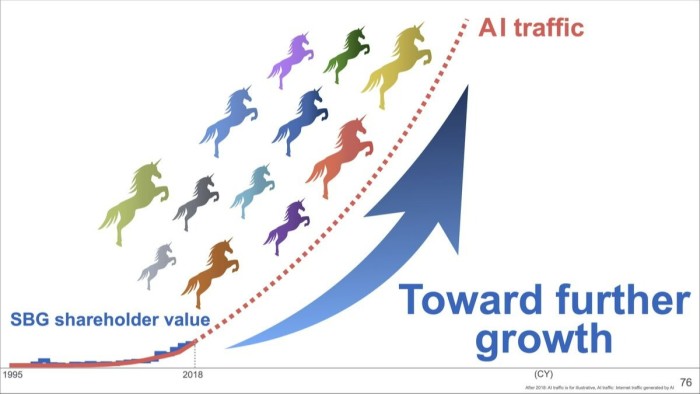A beginner’s guide to getting away with accounting fraud, part two

Roula Khalaf, Editor of the FT, selects her favourite stories in this weekly newsletter.
Leo Perry was a fund manager at Ennismore Fund Management between 2003 and 2022 and is now an Open University student. This is part two of his series on accounting fraud.
Last time out we worked how we wanted to go about faking sales. We’ve bought ourselves control of a banana distribution business for peanuts, because it never made any money. And then added a few lemon sales to a bunch of shell companies set up by friends. Revenue is up a little but profits are way up, because our fake sales are all margin (we’re not actually delivering any lemons after all). We can run with this for a long time because the fake sales are a small part of the overall business. And if they start getting too big we can always do some more no margin volume to dilute the bottom line.
So far so good.
Now normally the way it works when you sell something is you then get paid. You get cash in return. That’s what money is after all, credit to buy more stuff in return for what you sold (which, most often, is yourself). You might not get paid right away. You might allow a few weeks for your customer to cough up (which is giving actual credit). But in the end you get your money. Otherwise you’re not really selling, you’re a charity (or a slave).
But of course we’re never going to collect on the lemons we invoiced for. And that’s going to start to show on our balance sheet, thanks to the beautifully simple logic of double entry bookkeeping. This says that for every action there has to be an equal and opposite reaction (OK that’s Newton’s Third Law but it’s close enough). Booking a profit increases the value due to owners of the business. And that’s a liability because these shareholders will want to get paid one day (good luck with that). So there must be an asset to match.
In our case that asset is definitely not going to be cash. What we get instead is more and more payments receivable from our customers.
Unattainable cash proved the undoing of Bio-On. In 2019 it was one of Italy’s only tech unicorns. This was back when being a unicorn was a good thing, because there weren’t any adults in the room. When it was cool for SoftBank to fill presentations with pony like this:

Bio-On’s billion-euro valuation largely hinged on its claim to have come up with a revolutionary new way of manufacturing a biodegradable plastic. The compound it planned on making had been around for about a century but Bio-On claimed it could produce it at something like a tenth of the cost anyone else had managed.
Or maybe not, as it turned out.
Here’s a picture. It’s worth a thousand words. This was the entrance to its new factory, which management had said was complete in mid-2018, when I visited on a funny little trip to Bologna in January the following year:

One thing Bio-On was great at was announcing licensing deals. Collecting on them, not so much, which is why we can learn from it.
By way of example, in July 2015 it put out a press release on a deal with French sugar co-operative Cristal Union (in fact the tie-up was with a joint venture between the two companies, B-Plastic). Bio-On’s 2015 accounts show it booked €3.25mn of license revenue from this JV — and collected none of it in cash. By the end of 2017, €2.75mn was still due from B-Plastic but the accounts for the JV show no liability, or cash to pay it with.
Oddly, Bio-On accounted for its stake in the JV with a €1mn book value at the end of 2015. But it then removed the item the following year, writing off the investment but not restating its 2015 accounts. So Bio-On appeared to have invested €1mn in the JV then written that off — while collecting license fees worth, at most, only half the money it put in.
Not collecting on sales made Bio-On a pretty obvious target for investigation. In the three years to the end of 2018 it reported €65mn revenue. Receivables were €60mn.
A few months after my visit to Bologna, the activist short seller Quintessential Capital published a report that highlighted a few issues at the company. In October 2019, Bio-On’s founding CEO and chair Marco Astorri was arrested on suspicion of accounting fraud and market manipulation, shortly before the company was declared insolvent.
After several failed auctions, Bio-On was bought out of bankruptcy by Miap Group of Italy late last year. Its representatives did not respond to a request for comment. The case against Astorri is ongoing. He could not be reached for comment and his lawyer did not respond to a request for comment. “Astorri claims his innocence against all the accusations that have been made against him,” his lawyer told Institutional Investor in April 2020.
We really don’t want that kind of thing happening to us.
I first spoke to Quintessential’s principal Gabriel Grego back in 2015, after he published a report on another business I was short, Globo. This was a UK company but it was all Greek to me. Management claimed it had a hugely successful bring-your-own-device app, GO!Enterprise, which allowed you to use your own mobile securely at work.
And apparently this had hundreds of thousands of paying users. I was a bit sceptical because its Google appstore listing showed fewer than 5000 installs. The fact that the corporate website touted Lehman Brothers as a customer in 2013 was also a bit of a red flag:

On the face of it, though, Globo was having no trouble collecting on these sales. The results for the first half of 2013 reported trade receivables up by only 4 per cent, despite strong revenue growth. But then, this wasn’t exactly an apples-to-apples comparison.
You see on December 3, 2012, Globo sold control of its Greek operations to local management for €11.2mn and with it went €40mn-odd of receivables. Of course, no one was really going to pay much money for nothing much. But the consideration was deferred, so everyone was happy (for now).
Purely coincidentally, two weeks later, another mobile tech company I was short sold its Greek operations to local management as part of a $24mn disposal programme. This was Velti, which ended up with a billion-dollar valuation on the US Nasdaq back before unicorns were even a thing. Away went $20mn odd of receivables. Of course, no one was really going to pay much money for nothing much. But the consideration was deferred, so everyone was happy (for now).
Another coincidence is that Globo and Velti were both worthless within a few years. Velti entered bankruptcy protection in 2013 to complete an asset sale to Blackstone, while Globo collapsed into administration in 2015.
The Financial Conduct Authority said in November it had launched civil proceedings against the former CEO and CFO of Globo for alleged market abuse. The defendants are continuing to contest the case and could not be reached for comment. The FT has been unable to trace the current owners of Greek assets that were sold by Globo and Velti.
The point of these examples is not to allege impropriety, and indeed in many instances allegations have been contested. The point is to highlight some of the issues arising in the under-appreciated art of receivables management.
So here’s an idea. After we’ve built up a pile of unpaid invoices selling lemons, let’s start reselling our in-house inventory management software to third parties. Most of the fruit themed brands are taken but the lawyers have checked and Lemonware is still available.
While sales from this new line of business are getting analysts and investors all excited about the total addressable market of fruitware, we quietly bin our out-of-date lemon operation (along with all its uncollected receivables) to Barry at the Royal Oak. Of course he’s not going to pay us. Trust me, I know Bazza. But now we’re owed disposal proceeds, not unpaid receivables. And that’s a whole different line on our balance sheet. So it doesn’t seem like we have a problem converting sales to cash any more, or does it?
That should buy us enough time to figure out the next instalment.
Further reading:
— A beginner’s guide to accounting fraud (and how to get away with it)
Comments